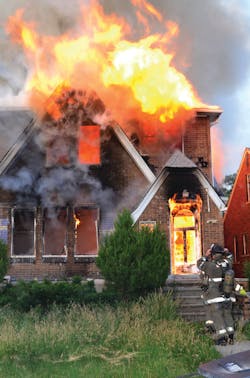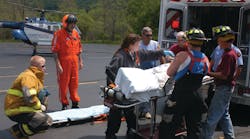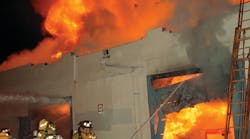20 Tough Questions For the Fire Chief: Are You Prepared To Answer Them? Question 5
This question is particularly challenging because of its connation that a certain response time may be legally defendable. To the best of our knowledge, there is no law that defines or establishes response times for emergency services. Thus, the question may be better framed to determine if a particular response time to an emergency raises a claim of misfeasance, malfeasance or nonfeasance of duty.
Misfeasance – Taking an action determined to be inappropriate, even if with good intent. (Example: A response time is deemed to be too long by a plaintiff even though the fire department was operating to the best of its abilities.)
Malfeasance – Taking an action that purposefully results in harm. (Example: A response time was delayed because the members were engaged in a softball game and decided to finish the inning before responding to the emergency.)
Nonfeasance – Taking no action at all when a prudent person otherwise would have (Example: The fire department did not respond at all because there have been too many false alarms to that address in the past.)
We must make it clear that we are not attorneys. Thus, asking an attorney questions about response-time liabilities would be prudent. Ask several attorneys and you’re likely to get multiple opinions. It would be smart to get your legal opinion from your town or department attorney because he or she will be the one providing the defense if a legal challenge is raised about response times or failure to respond in a timely manner.
What about the evidence for a response-time standard? Unfortunately, the empirical evidence is somewhat limited. Most responders possess anecdotal evidence, gathered through years of experience while responding to emergency calls. Armed with this experience, responders know a quick response makes a difference in the outcome.
Some scientific proof of fire growth does exist, however. The National Institute of Standards and Technology (NIST) has modeled fire growth for multiple scenarios, including incidents where firefighters were killed. These videos can be found on YouTube using the search terms “NIST fire modeling video” or “NIST flashover video.” NIST has also measured and graphed fire growth using devices that track heat generation over time. NIST’s work provides solid evidence that fire, left unchecked, will grow exponentially as it consumes the contents of a structure.
Fire departments with quick and appropriately staffed responses to fires (assuming the fires are reported early and efficiently) have a better chance of saving lives and reducing property damage than a department whose responses are slower. The fire growth charts support this. But where is the evidence that supports what a response-time goal should be? Unfortunately, this is where the empirical data falls short. It has not been proven, scientifically, the difference in outcome when a response time is four minutes versus five minutes versus six minutes versus 10 minutes.
Several videos are available that help demonstrate the results of time delays. These can also be found on YouTube. First is a video created by Underwriters Laboratories (UL) demonstrating the differences in legacy contents versus newer contents in homes. In this video, the UL team lights two fires in mockups built side by side and show fire progression. In the modern-contents mockup, flashover occurred in three minutes, 40 seconds. In the legacy-contents mockup, the flashover takes 29 minutes, 25 seconds to occur. Search “New vs Old Room Fire Final UL” for this video.
Second are the many videos created by fire departments across the U.S. during fire sprinkler demonstrations. In these videos two mock rooms are set on fire. One of the rooms has a sprinkler system and the other does not. The difference in fire progression and damage is significant. Search “Home fire sprinkler demonstration” for these videos.
The National Fire Protection Association (NFPA) standards for deployment and response (NFPA 1710 for predominately career fire departments and NFPA 1720 for predominately volunteer departments) establish response-time goals for fire departments. However, it could be contested these numbers have not been validated scientifically.
Setting goals
How should a community develop a response-time goal for emergencies? All stakeholders (elected and appointed officials, first responders, citizens and visitors) are likely to agree that response times to critical emergencies should be quick and efficient. No one wants to call 911 when their house is on fire and wait 30 minutes for the fire department to arrive. In such a scenario the outcome (a total loss) would be highly predictable.
Combined, we have more than 40 years experience as chief officers. From that we have concluded that many citizens assume their emergency services providers are going to respond quickly when called. We can count on one hand how many times citizens have called, saying they were considering moving into our community and wanted to know what the response time was for the fire department to an emergency. Why do citizens seem so unconcerned about something that’s so important?
We think there are two foundational reasons: indifference and assumptions. Citizens are indifferent because they believe house fires are very rare and such a tragedy will never happen to them. Citizens also assume the fire department (and the town’s elected and appointed officials) are looking out for their best interests by ensuring emergency responses will be quick and efficient.
The response-time goal set for any community should be an informed decision. Those involved in the decision should understand the benefits and consequences of various response times (with acknowledgment there is little science to support an exact number). First responders, while passionate about a quick response, need to understand that every community and the citizens who live there have financial constraints and competing demands for limited budget dollars.
Just one of many
We in public safety are just one among many priorities that elected officials and citizens have. And for so much as we may think we are the most important priority in the lives of our tax payers, we may not have sweeping community backing to support the service level we think our residents deserve. The goal is to work with elected officials and the community to establish the response time goals.
Once the mutually agreed upon standard is set, the next step is to ensure there is a means in place to measure performance. For example, the standard for your community may be to have the first apparatus on scene of a working structure fire in less than six minutes and a full first-alarm assignment (two engines and a ladder truck for the sake of this example) on the scene in less than 12 minutes. Along with this, there may be personnel-response goals, say four persons on the first-arriving apparatus and a total of 15 personnel assembled on the scene in 12 minutes.
How well does the department do at meeting this goal? What should the acceptable “fail” rate be (i.e., how often the goal is not met due to extenuating circumstances such as multiple simultaneous calls or severe weather delays)? While the objective may be 100% compliance to the goal, it is not realistic to expect that can happen. Thus, in addition to setting the response time goal, the stakeholders should also establish the acceptable limits for outliers.
For example, a community may establish a goal to have an engine company on the scene of any reported structure fire, with a crew of four, in six minutes, 90% of the time. Additionally, at no time should the first-arriving engine take longer than 12 minutes. When responses exceed the goal, an evaluation should be conducted to determine how and why it happened and what steps could be taken to reduce the likelihood of a reoccurrence.
If exceptions occur more than 10% of the time (i.e., less than 90% compliance), the shortcoming should be resolved. This may mean retooling the way the department responds to emergencies, allocating additional resources to meet the goal or adjusting the goal to meet the capability of the department within the confines of existing resources. All three options should involve input from elected and appointed officials, department representatives and the community.
The goal of every fire department is to provide the very best service for its community and one measure of that service is response times. However, fire department administrators must realize resources are not unlimited and there are many competing demands for budget dollars.
RICHARD B. GASAWAY, Ph.D., served 30 years in public safety, including 22 years as a chief fire officer, before retiring in 2009. He holds bachelor’s, master’s and doctor of philosophy degrees in finance, economics, business administration and leadership and is the principal consultant at the Gasaway Consulting Group. Dr. Gasaway is the host of the Leader’s Toolbox podcast radio show on Firehouse.com and runs the Situational Awareness Matters! website www.SAMatters.com. RICHARD C. KLINE has been the fire chief for the City of Plymouth, MN, since 1992 and is a senior associate at the Gasaway Consulting Group. He holds a master’s degree in public safety and is a credentialed chief fire officer through the Commission on Public Safety Excellence. Kline is the chairman of the Minnesota State Fire Chief Association’s Safety and Health Committee. The authors can be reached at: [email protected] or 612-548-4424. This series is based on the International City and County Managers Association (ICMA) program “Asking Your Police and Fire Chief the Right Questions to Get the Right Answers.”
A Personal Experience
Almost 20 years ago, I conducted an informal community survey to try to determine what level of service my citizens felt were acceptable. In one survey, I asked the citizens to tell me how fast they would like the fire department to respond if they had an emergency. The results were consistent: four to six minutes. This was about what I expected. Then we tried to pass a levy to ensure we could provide the response times they said they wanted. The levy failed.
I retooled the survey and my questions on response times tied a level of funding that would be needed for each response-time increment. For example, if the citizen wanted a response time under four minutes, their property taxes would increase by $300 per year. If they wanted a response time of four to six minutes, that would increase their taxes by $270, six to eight minutes $250 and so on. How did the results of this survey compare? The acceptable response time went up from four-six minutes to 12-14 minutes. I was devastated because I knew, anecdotally, that a response time of 12-14 minutes would increase property loss and increase risk to our citizens.
What do they really want?
But reducing risk has a price tag and that cannot be ignored, no matter how passionate we are about our beliefs that fast response times save lives and reduce property losses. As I contemplated the survey results, I felt the citizens didn’t really want to accept more risk because of the cost. Rather, my belief was the citizens could relate to the cost of emergency services, but they didn’t understand the correlated risks. In other words, they were not aware of what can happen if a fire was left to free-burn for 12-14 minutes versus being extinguished in half the time.
So we launched an educational campaign, armed with videos and data that explained fire growth. As we conducted our programs, many of our residents were astonished with what they didn’t know about how quickly fire grows and how rapidly a structure is filled with deadly smoke and gases. Others were unimpressed and accused us of using “scare tactics” to try to increase our funding. I found this mixed feedback frustrating.
An opportunity pays off
How could we paint an accurate picture without leaving our residents feeling we were using unscrupulous tactics? As luck would have it, we acquired a structure to burn and seized the opportunity to invite residents to observe and elected officials to participate. Fortunately for us, our elected officials accepted our invitation and many citizens came to watch the fire department at work – an experience that most citizens and elected officials had never seen first hand.
We outfitted a room with standard furniture, set it on fire and video recorded the results. For the sake of firefighter safety, the fire was extinguished using an exterior attack. But the visual effect of citizens and elected officials seeing fire growth first hand was priceless. We also broadcast the video on a local cable TV for the citizens who were not able to attend. The video was narrated to explain what was happening and a timer was added on to the video to show the elapsed time. It wasn’t science, but it was enough to convince our residents that quick response times are important. The levy passed.
— Richard B. Gasaway, Ph.D.








